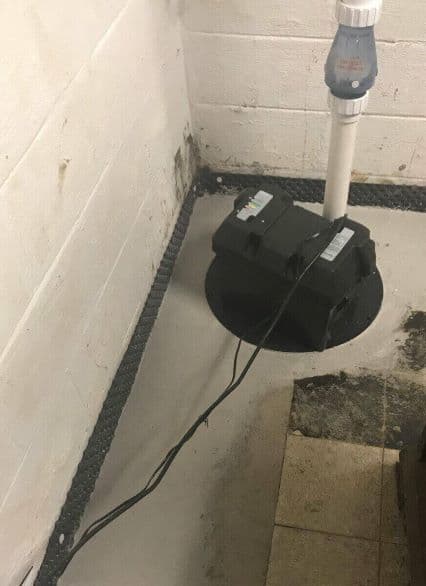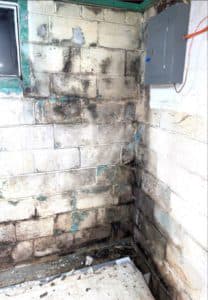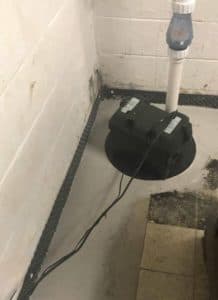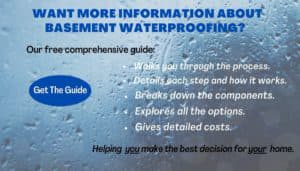Can a Basement Floor Leak?

Most of the time, when a basement floods, the water comes in through cracks in the walls or at the cove joint. (That’s the professional term for the spot where the wall and floor connect.) But once in a while, water also comes up through cracks in the center of the floor. This indicates that you have a serious issue with hydrostatic pressure and should contact a professional for help.
Acculevel has been repairing foundations and waterproofing basements since our start in 1996. We’re a family-owned and operated company, and we pride ourselves on our friendly, knowledgeable, and experienced team members. We have successfully waterproofed thousands of basements for our customers, and we provide the best warranty in our industry.
We’ll explain how water leaks develop in a basement floor, explore repair options, and provide you with additional resources to answer your questions about the ins & outs of waterproofing.
What Causes Cracks in a Basement?
If the cracks in your basement are allowing water to intrude, the cracks were probably caused by hydrostatic pressure. This is an industry term for what happens when water has oversaturated the ground outside your foundation. The excess water that can’t be absorbed pushes against the foundation, seeping through the concrete and creating cracks.
 This photo was taken by an Acculevel project manager during a routine free estimate. Cracks are forming between the blocks, letting water intrude and mold to develop.
This photo was taken by an Acculevel project manager during a routine free estimate. Cracks are forming between the blocks, letting water intrude and mold to develop.
How Do You Reduce Hydrostatic Pressure?
In most cases, installing a water drainage system will resolve the issue. To install water drainage, the perimeter of the floor is broken up. Drainage tunnel is installed, then new concrete is poured to replace the floor.
This reduces the water pressure because instead of trying to force its way into the basement, there’s a drainage system that allows it to flow efficiently. The water track drains into a sump pump, which expels the water out of the home through a discharge line.
 This photo was taken by an Acculevel crew member after installation. You can see the newly poured concrete around the perimeter (covering the water drainage) and the sump pump in the corner.
This photo was taken by an Acculevel crew member after installation. You can see the newly poured concrete around the perimeter (covering the water drainage) and the sump pump in the corner.
When Perimeter Drain is Not Enough
You will notice that I said “in most cases.” Sometimes, traditional water drainage is not enough. If the soil around your home has a lot of clay in it, you may need an additional track across the floor. This is because water does not move easily through clay layers.
If the perimeter drain is insufficient, and water continues to seep into the basement through the floor, you need an additional drainage track. This is installed just like the perimeter drain; the basement floor is broken up in a line down the center, track is placed, then covered with a new layer of concrete. The drainage track is tied into the perimeter track, so that all water is directed to the sump pump.
What if You Don’t See Any Cracks?
Every now and then, we see a situation that doesn’t fit these two scenarios. There’s no cracks in the floor, no water collecting in the basement, but the center support columns are damp. In this instance, water may be “wicking” the water up; bricks and concrete and porous and can absorb water. In these cases, a good dehumidifier is usually what’s needed to dry out the columns and eliminate the moisture issue.
To Learn More:
For a free, in-depth look at basement waterproofing, check out our guide. You can read it from end to end, select the chapter relevant to you, or bookmark it as a reference when you meet with contractors.
Before you meet with a contractor of any kind, we urge you to verify that the company is reputable, insured, and accredited by the Better Business Bureau. If you aren’t sure about how to find the best contractor for you, we have a downloadable checklist of questions you should ask a contractor.
If you live in Indiana or the surrounding states, contact Acculevel. We are a family-owned and operated company, and we provide free written estimates. One of our experienced project managers will evaluate the basement and foundation, then recommend the best course of action for you. We believe everyone deserves a healthy and secure home, and we want to help you protect yours.

